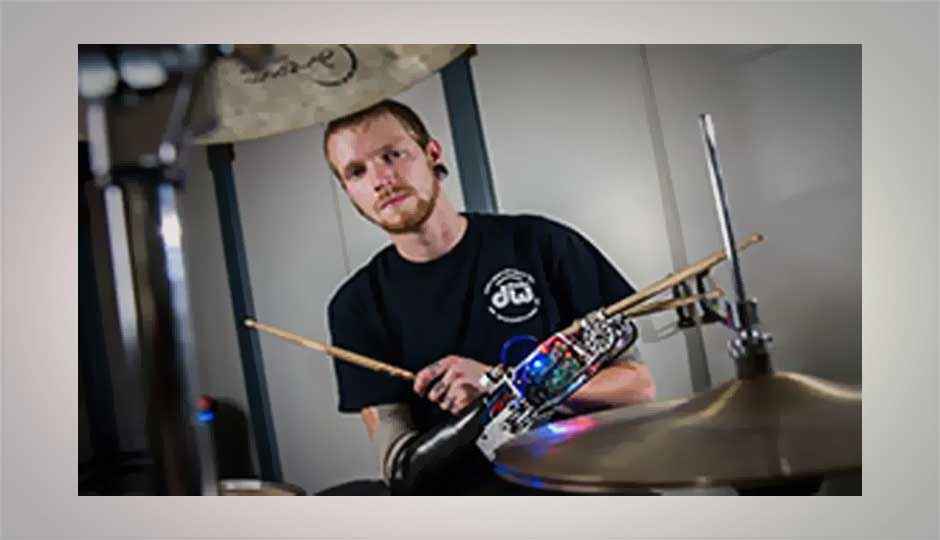Robotic arm helps amputee gain ‘super’ drum skills

Developed by Gil Weinberg from the Georgia Institute of Technology, Barnes' prosthetic arm uses a mechanism called electromyography to pick up on the tiny electrical signals emitted by the muscles in his upper arm.
Georgia Institute of Technology announced a unique prosthesis last week which could enable amputees to do things that are otherwise physically impossible for them. The new prosthesis has become an essential tool for Jason Barnes who aspires to become a professional drummer but lost his arm in an accident two years ago.
Jason Barnes got terribly electrocuted while cleaning out a vent hood at a restaurant and his right arm had to be amputated below the elbow. Aspiring to become a professional drummer, this accident a huge tragedy for Barnes.
But it didn’t affect his dedication and passion. Barnes built himself a basic drumming contraption out of a brace and some springs that enabled him to hold a drumstick with his right arm. This definitely limited his playing at the time but he was able to gain admission to the Atlanta Institute of Music and Media in Georgia.
Barnes met his drum teacher there who introduced him to Gil Weinberg, whose is already well-known for building stand-alone improvising jazz bots like the head-banging marimba-playing robot Shimon. After meeting Barnes, Weinberg built a robot that can be attached to amputees called the robotic drumming prosthesis which has motors that power two drumsticks. The first stick is controlled both physically by the musician’s arms and electronically using electromyography (EMG) muscle sensors. The other stick “listens” to the music being played and improvises.
Weinberg says, “The second drumstick has a mind of its own. The drummer essentially becomes a cyborg. It’s interesting to see him playing and improvising with part of his arm that he doesn’t totally control.”
With the prosthesis developed by Weinberg, Barnes is now able to control the speed or bounce of the stick without a wrist or fingers which he wasn’t possible for him with his own prosthesis that he had earlier developed.
“Now I can flex and send signals to a computer that tightens or loosens the stick and controls the rebound,” said Barnes.
Equipped with such a tool, Barnes is able to perform three distinctive stick patterns simultaneously (a technical capability unimaginable to most drum set players except jazz drummer Eric Harland). An embedded chip can control the speed of the drumsticks which can program the prosthesis to play two sticks at a different rhythm. It can also move the stick faster than human possibilities.
“I’ll bet a lot of metal drummers might be jealous of what I can do now,” he says. “Speed is good. Faster is always better.”
Barnes is exploring the capabilities of his new robotic arm which will make its concert debut at the Atlanta Science Festival on March 22 where he will play drums alongside Sanders and other robotic creations of Weinberg.
Watch Barnes play the drums with his robotic arm and get ready for some fast grooves.
|
Source: ArsTechnica
